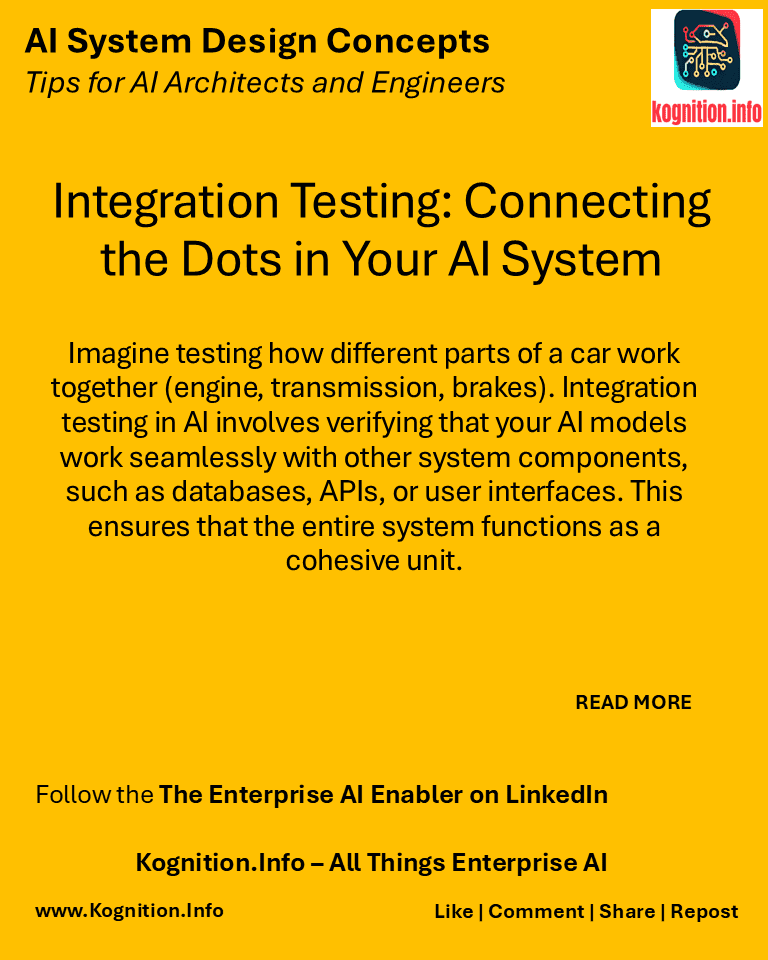
Imagine testing how different parts of a car work together (engine, transmission, brakes). Integration testing in AI involves verifying that your AI models work seamlessly with other system components, such as databases, APIs, or user interfaces. This ensures that the entire system functions as a cohesive unit.
Use cases:
- Testing data pipelines: Ensuring that data flows correctly from data sources to the model and back.
- Testing API integrations: Verifying that the model can communicate with other services through APIs.
- Testing user interactions: Checking that the model responds correctly to user inputs and produces the expected outputs in the user interface.
How?
- Identify integration points: Determine where your model interacts with other system components.
- Design test cases: Create test cases that cover different integration scenarios and data flows.
- Use testing frameworks: Utilize testing frameworks or tools to automate integration tests.
- Mock external dependencies: Use mock objects or services to simulate external dependencies during testing.
Benefits:
- End-to-end validation: Ensures that the entire AI system works as expected.
- Early problem detection: Identify integration issues early in the development process.
- Reduced risk: Minimizes the risk of unexpected behavior or failures when deploying the system.
Potential pitfalls:
- Test environment: Use a test environment that closely resembles the production environment.
- Test data: Use realistic and representative test data to ensure meaningful results.
- Complexity: Integration testing can be more complex than unit testing due to the interactions between multiple components.
